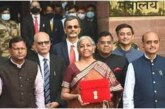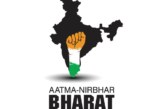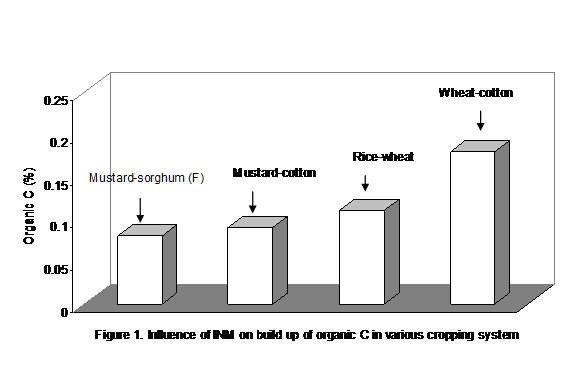Railways have been the spine of Indian transport system as well as economy. In the days of yore, it was the harbinger of national integration, though unknowingly, when people of all castes and religions travelled in the same compartment. It served as the building block of Indian nationhood linking east to west and north to south, Kamrup to Kutch and Kashmir (or at least Jammu) to Kanyakumari.
 With the changing times, those ideas and that idealism have seemingly become a passe mainly due to derailment of the objectives that this instutution should strive for. Still a major transporter of passengers and carrier of freight, it is fast losing its monopoly. It transports 30 million passengers every day, which is only 10 percent of India’s long-distance or suburban passenger traffic. When it comes to moving freight, the 2.65 million tonnes it transports every day seems dramatic — but is only 30 percent of the freight traffic in India.
With the changing times, those ideas and that idealism have seemingly become a passe mainly due to derailment of the objectives that this instutution should strive for. Still a major transporter of passengers and carrier of freight, it is fast losing its monopoly. It transports 30 million passengers every day, which is only 10 percent of India’s long-distance or suburban passenger traffic. When it comes to moving freight, the 2.65 million tonnes it transports every day seems dramatic — but is only 30 percent of the freight traffic in India.
A railway station in India would invariably present a picture of neglect with unattended urinals, with human excreta strewn all over the place, tobacco stains, mounts of garbage, stray animals, beggars, touts and cheats. The rolling stock is no different with coaches meant for the last century, dilapidated coaches, lack of even basic facilities such as uninterrupted water supply, food and other essential items, unhygienic coaches and with no real research and development to cater to a growing modern society.
A gradual decline has seemingly set in the present Railway system which is reflected in different aspects. Lack of hygeine and basic amenities for the passengers, increasing number of accidents, excessive politicization, growing deficit in revenue and other attendant maladies have adversely impacted the efficiency and performance of this institution of great historical significance.
Lack of Amenities
The maintenance of Railway platforms and coaches is very poor. Toilets are stinky and most of the times without water. The drinking water often served at railway stations is of very poor quality. Even eatries served in long route trains is ersatz. Lot of water is wasted in cleansing the compartments at the workshops. The people using toilets in the running trains lead to littering of human waste along the railway lines, thereby contributing to unhygienic conditions.
The contemplated move of the Railways to install envirnment-friendly bio-toilets in trains is facing technical hitches. The move aims at installing all new passenger coaches with bio-toilets by 2016-17, but obsers feel that retrofitting of the existing coaches are not expected to be completed before 2021-2022.
Politicization
The Indian Railways over the years have become a highly politicized institution. The persons who happened to be at the helm of affairs in the Railways, some of them tried to nurse their own constituencies in the name of development of the Railways while the real interests of the nation were kept at the backburner. This trend was set in motion in the 1980s under ABA Ghani Khan Chowdhury who used the Railways to nurse Malda parliamentary constituency. This precedent was replicated by the successive railway ministers of coalition era – Ram Vilas Paswan, Nitish Kumar, Lalu Prasad Yadav — who looked upon Indian Railways as nothing more than a patronage machine. Ms Mamata Banerjee in her capacity as Railway Minister continued this legacy.
Priorities were accorded not on the basis of genuinie requirements but on political whims and fancies of the ministers or influential leaders to nurse their respective constituencies. The first National Transport Policy Committee, set up in 1980, had recorded that 74 percent of passenger traffic and 89 percent of freight was dependent on Indian Railways. However, political interference thwarted all these goals which still a chimera.
Major Rail Accidents
Between December 2000 and 31 May 2012, there have been 18 major rail accidents, as shown in table below:
Major Rail Accidents Dec 2000-May 2012
| S. No. | Date | No. of Persons Dead | No. Of Persons Injured | Train Name/Route |
| 1. | 3 December 2000 | 46 | 130 | Howrah-Amritsar Mail |
| 2. | 22 June 2001 | 40 |
|
Mangalore-Chennai Mail |
| 3. | 12 May 2002 | 12 |
|
New Delhi-Patna Shramjeevi Express |
| 4. | 4 June 2002 | 34 |
|
Kasganj Express |
| 5. | 10 September 2002 | 120 |
|
Kolkata-New Delhi Rajdhani Express |
| 6. | 3 January 2003 | 18 |
|
Express train |
| 7. | 15 May 2003 | 40 | More than 50 | Passenger train in Punjab |
| 8. | 15 June 2003 | 53 | 25 | Karwar-Bombay Central |
| 9. | 2 July 2003 | 22 |
|
Andhra Pradesh |
| 10. | 16 June 2004 | 20 | 60 | Matsyagandha Express |
| 11. | 28 May 2010 | 148 |
|
Gyaneshwari Express |
| 12. | 19 July 2010 | 60 |
|
Uttarbanga Express |
| 13. | 22 May 2011 | 16 |
|
Bihar’s Madhubani district |
| 14. | 7 July 2011 | 31 | 17 | Train hitting a Bus |
| 15. | 22 November 2011 | 07 |
|
Howrah-Dehradun express |
| 16. | 11 January 2012 | 04 |
|
Delhi-bound Brahmaputra Mail |
| 17. | 22 May 2012 | 25 |
|
Banglore-bound Hampi Express |
| 18. | 31 May 2012 | 07 |
|
Howrah-Dehradun Doon Express |
| Total | 703 | 255 |
It is revealed from this table that between December 2000 and 31 May 2012, there have been 18 major rail accidents in which 703 people died over 255 persons were injured. The rail accident taking place on 28 May 2010 claimed 148 lives and 120 persosns lost their lives in the accident that occurred on 10 September 2002. Some of these accidents took place on unmanned railway crossings.
There is a need for ensuring more security measures to avoid accidents which cause immense loss of human lives and property. Besides, the unmanned railway crossings should be properly manned to manage the railway traffic.
Loss Incurring Enterprise
Indian Railways has turned to be a loss incurring enterprise. The Comptroller and Auditor General (CAG) in its report for 2010-2011 stated that the Railways suffered a loss of over Rs 3,200 crore for operating on uneconomical routes during 2005-10, while the accumulated loss of its key PSUs also went up significantly. The report said, “Railways sustained losses of Rs 3,228 crore in operation of uneconomic branch lines between 2005 and 2010 and the loss on operation of such lines increased to Rs 1,198 crore in 2009-10.”
It also said that till March 31, 2010, Railways’ three PSUs — Konkan Railway Corporation Limited (KRCL), BWECL and PRCL — suffered a cumulative loss of Rs 3,435.67 crore, out of which the loss suffered by KRCL alone was Rs 3,330.93 crore.
In an observation of uneconomical projects which connect the backward region of the country to the railway network, the CAG said Railways have already incurred an expenditure of Rs 8,549 crore on 50 incomplete lines and balance funds to the tune of 16,800 crore were required to complete these projects.
The CAG report also observed, “Audit examination of the 50 ongoing work of new lines sanctioned for socio-economic development of backward region revealed that five projects sanctioned more than 20 years ago, nine sanctioned between 15-20 years and 36 sanctioned between 10 and 15 years were still lying incomplete as on March 31, 2010.”
The Indian Railways has also exposed itself to high losses during accidents since it has stopped buying insurance cover that is mandated by law in most modes of transport — from a moped to an aircraft. According to sources, The Railway Claims Tribunal administers compensation paid out in incidents of death and injury. It pays an extra sum as ex-gratia amount over and above the compensation through its internal mechanism.
The Indian Railways stopped buying insurance in fiscal 2009 after realising it would have to shell out Rs 78 crore in 2011, compared to Rs 77 crore in 2010. Ironically, these payouts have been higher than the amount it would have paid for insurance since rickety infrastructure and terror attacks have led to loss of many lives and caused damage to property. By not taking cover, the railways had been saving on the insurance premium of about Rs 40 crore a year for the past two years.
But at the same time, it has been paying over Rs 150 crore as compensation for death, injury and loss of booked goods. The railways discontinued the policy cover not just to cut costs, but also because the claims process of insurance companies were causing inordinate delays. Absence of insurance at railways, the biggest transporter of passengers, is in contrast to stringent laws in the country for automobiles.
One of the reasons for insurance companies quoting successively higher rates for railway cover is the frequency of accidents. The investment required to maintain and upgrade the British- era infrastructure is lacking. “Reinsurance companies have been unwilling to underwrite the cover because of the frequency of accidents,” said another insurance company executive.
Nevertheless, without a radical transformation in the manner in which Indian Railways is managed — and without bringing in good governance and capacity building of the railway employees, India’s rail story will keep going downhill. The big question at this juncture is: can the new railway minister transform the system or will he continue the legacy of his predecessors?



